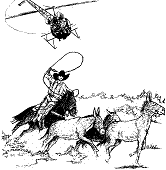Vertebrate Pest Conference: Proceedings

Vertebrate Pest Conference Proceedings: 11th (1984)
Date of this Version
3-1-1984
Document Type
Presentation
Abstract
Controlled laboratory and field test protocols were developed to assess the repellent efficacies of six commercially manufactured ultrasonic rodent repellent devices. The laboratory test structure (68.7 m2) was divided into two rooms (32.5 m2 each) with a central harborage area (3.5 m2) containing a colony of 12 wild Norway rats (Rattus norvegicus). For each test, a single ultrasonic device was attached to the far end of one room and rat activity measures (oat consumption, packet damage, photocell counts) were taken during 1-week baseline and 2-1/2-week test periods. Field test structures varied in floor area (6.5 to 197 m2) and were of either metal or wood construction. All contained existing Norway rat, house mouse (Mus musculus), or field mouse (Peromyscus maniculatus) infestations. No rodent control was conducted at these sites other than the application of selected ultrasonic devices. Rodent activity (packet damage, food consumption, rodent tracks) was measured twice per week during three successive 3-week intervals with devices operating only during the second interval. Repeated measures analysis of variance and chi square were used to statistically evaluate the reliability of ultrasound effects.

